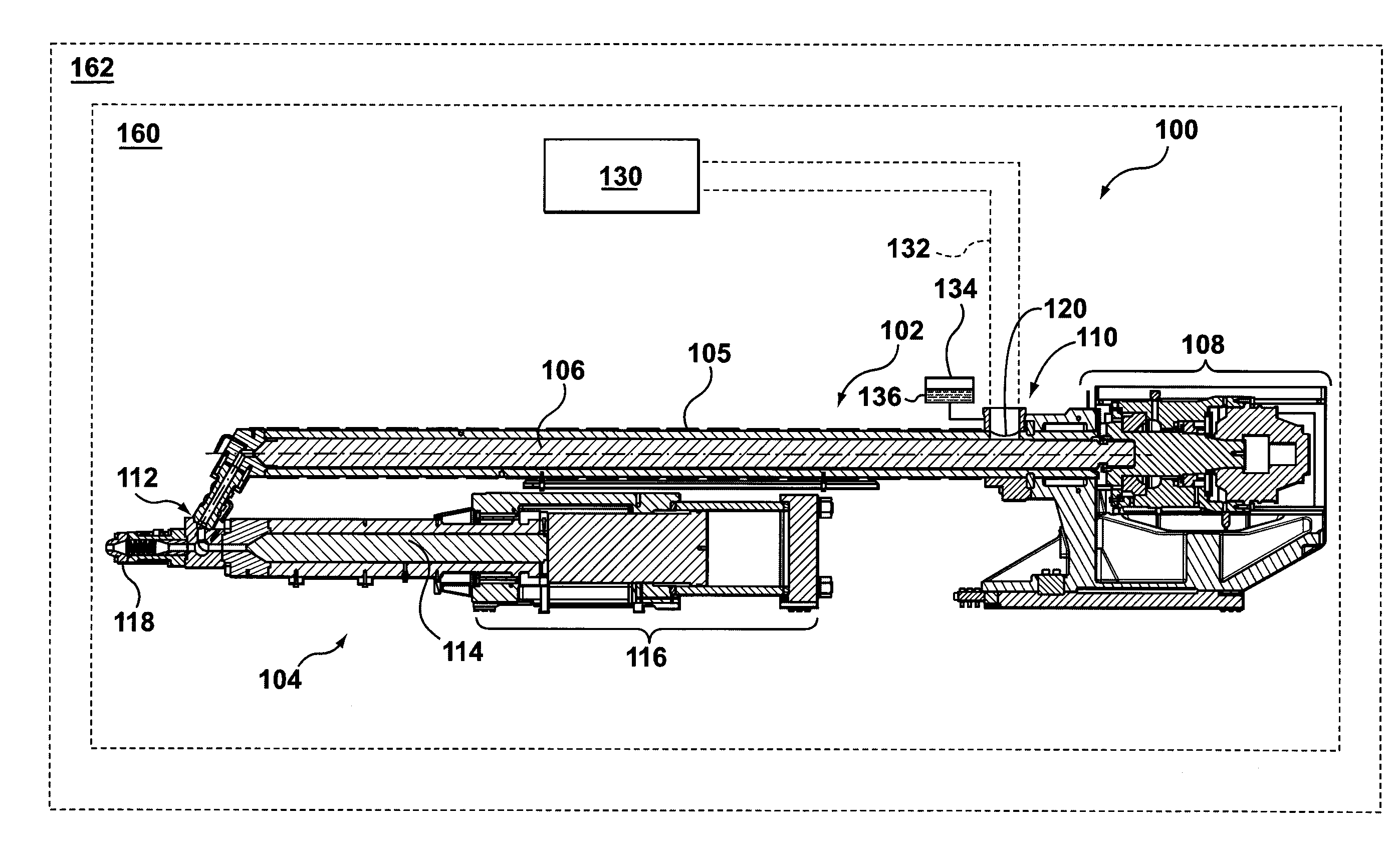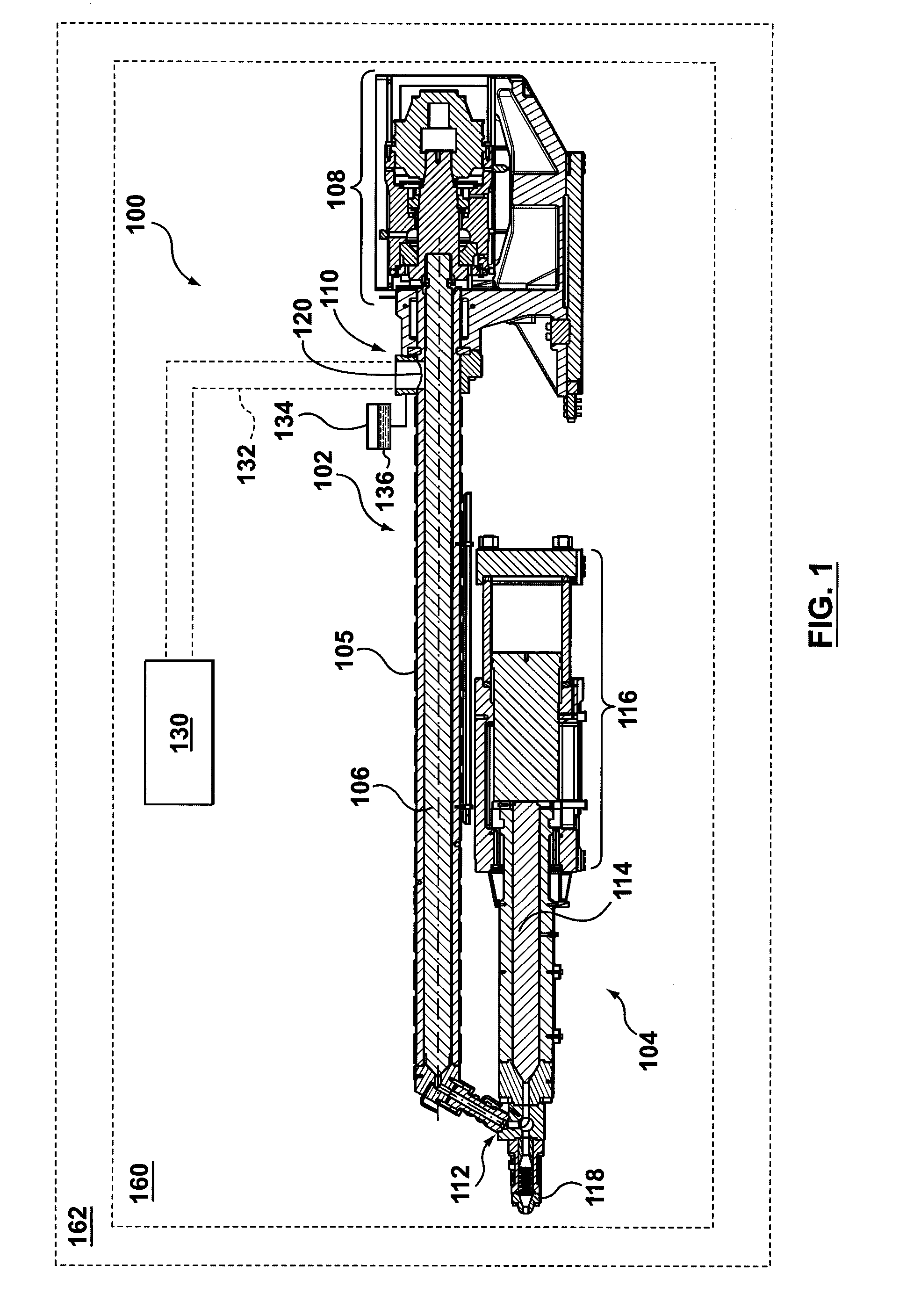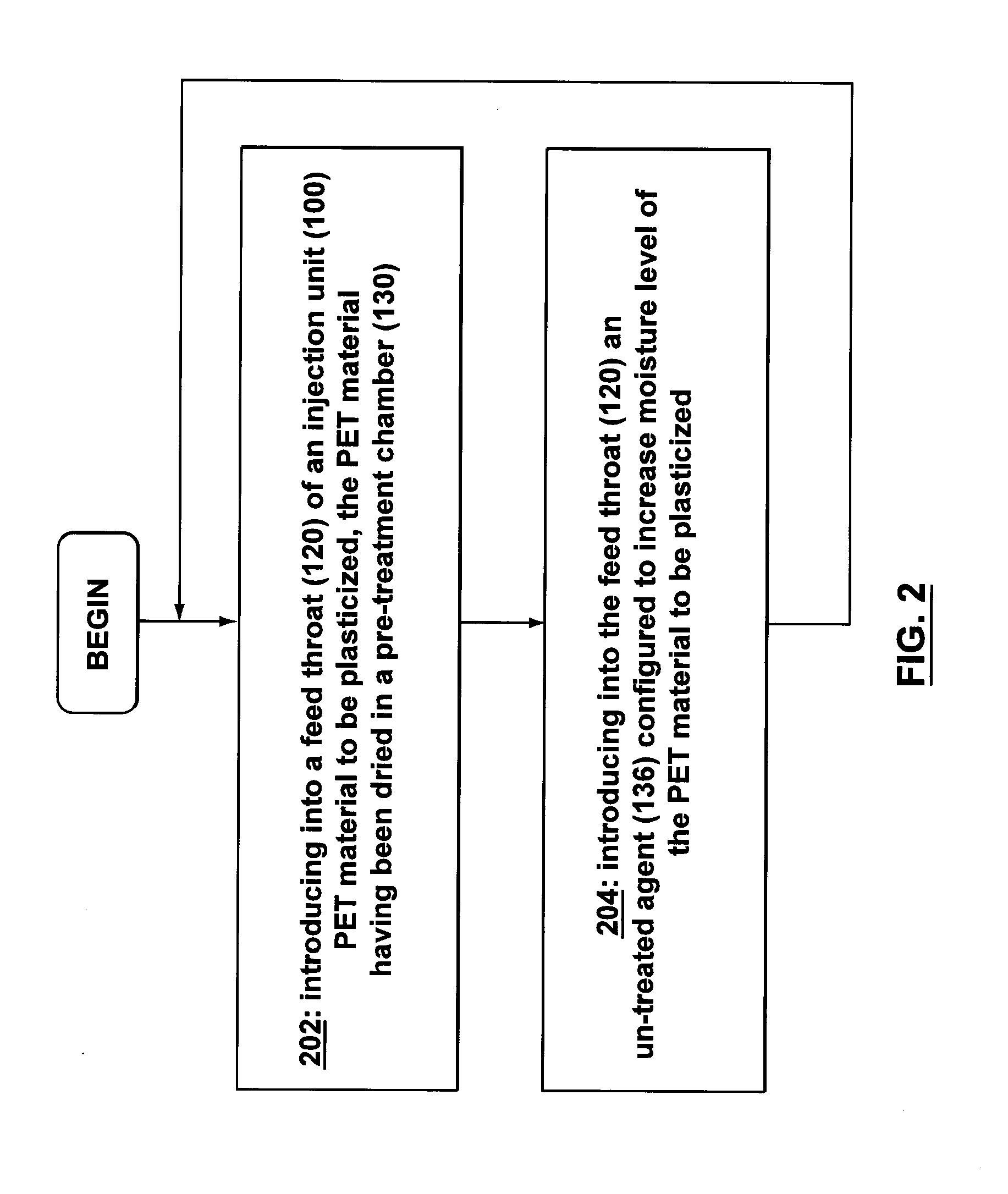Method of decreasing acetaldehyde level in a molded article
a technology of acetaldehyde and molded articles, which is applied in the field of molding systems, can solve the problems of pet as molding raw material still suffering from some drawbacks, pet has tendency to degrade and generate acetaldehyde, and is known to negatively affect the occurrence and amount of generated acetaldehyde, so as to increase the moisture level of pet material and reduce the content of acetaldehyde. the effect of the conten
- Summary
- Abstract
- Description
- Claims
- Application Information
AI Technical Summary
Benefits of technology
Problems solved by technology
Method used
Image
Examples
Embodiment Construction
)
[0028]Embodiments of the present invention have been developed based on the inventor's appreciation of at least one disadvantage associated with the prior art approaches to decreasing acetaldehyde content in molded articles.
[0029]For example, those approaches in the prior art where additives (such as, for example, acetaldehyde inhibitors) are added to the PET raw material either during manufacturing of the PET granules or during plasticizing of the PET, can significantly increase manufacturing costs due to the high costs of such additives.
[0030]As another example, those approaches that subject the preform to an acetaldehyde decreasing treatment during the blow-molding process can also significantly increase capital costs, as those methods require adaptation of each blow-molding mold for the specific treatment. Within those methods, if it desirable to change the shape of the blow-molded article, the new blow-molding mold will need to be adapted to carry out the treatment process, ag...
PUM
| Property | Measurement | Unit |
|---|---|---|
| wall-thickness | aaaaa | aaaaa |
| structure | aaaaa | aaaaa |
| semi-crystalline structure | aaaaa | aaaaa |
Abstract
Description
Claims
Application Information
 Login to View More
Login to View More - R&D
- Intellectual Property
- Life Sciences
- Materials
- Tech Scout
- Unparalleled Data Quality
- Higher Quality Content
- 60% Fewer Hallucinations
Browse by: Latest US Patents, China's latest patents, Technical Efficacy Thesaurus, Application Domain, Technology Topic, Popular Technical Reports.
© 2025 PatSnap. All rights reserved.Legal|Privacy policy|Modern Slavery Act Transparency Statement|Sitemap|About US| Contact US: help@patsnap.com



